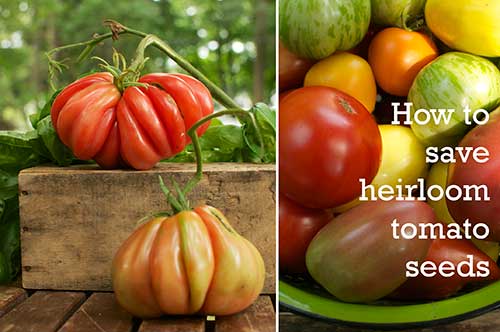How To Save Heirloom Seeds For Next Spring
Make sure to like Living Green and Frugally on Facebook, Shop at Amazon to help support my site and explore our PINTEREST BOARDS for innovative ways you can become self-sufficient.
How To Save Heirloom Seeds For Next Spring: A Comprehensive Guide
Heirloom seeds are a treasure trove of genetic diversity, carrying the history and flavors of past generations. Saving heirloom seeds ensures that these unique and often rare plant varieties can be preserved and passed down to future generations.
To successfully save heirloom seeds for next spring, it’s essential to understand the different types of plants and their pollination methods. In this article, we’ll explore self-pollinating plants, cross-pollinated plants, open-pollinated plants, and hybrid plants, along with the best practices for seed-saving.
1. Self-pollinating Plants
Self-pollinating plants have flowers that contain both male and female reproductive organs, allowing them to pollinate themselves without the need for external assistance. This makes seed-saving relatively simple and prevents accidental cross-pollination with other plant varieties. Some common self-pollinating plants include:
a) Tomatoes (Solanum lycopersicum): One of the most popular self-pollinating plants, tomatoes are easy to save seeds from. Allow the fruits to fully ripen on the vine before harvesting the seeds.
b) Peas (Pisum sativum): Pea plants are known for their self-fertilizing flowers, making them a great choice for novice seed-savers. Allow the pods to dry on the plant before collecting the seeds.
c) Beans (Phaseolus vulgaris): Both bush and pole beans are self-pollinating, making them a breeze to save seeds from. Let the beans fully mature and dry on the plant before harvesting.
To save seeds from self-pollinating plants, simply select the healthiest and most vigorous specimens, allow the seeds to fully mature and dry on the plant, and then store them in a cool, dry place for the winter.
2. Cross-pollinated Plants
Cross-pollinated plants require the transfer of pollen between different plants of the same species for successful fertilization. To save seeds from cross-pollinated plants, precautions should be taken to prevent unwanted cross-breeding with other varieties. Some examples of cross-pollinated plants include:
a) Cucumbers (Cucumis sativus): Cucumbers are prone to cross-pollination with other cucumber varieties and related species like melons and squashes. Isolate different varieties by several hundred feet or hand-pollinate to ensure pure seeds.
b) Carrots (Daucus carota): Carrots can cross-pollinate with wild carrot varieties. To prevent cross-breeding, separate different carrot varieties by at least half a mile.
c) Beets (Beta vulgaris): Beets readily cross-pollinate with Swiss chard and other beet varieties. Isolate different types by a considerable distance or use barriers like row covers to prevent unwanted cross-pollination.
3. Open-pollinated Plants
Open-pollinated plants refer to those that are pollinated by natural means, including wind, insects, birds, and other natural agents. These plants produce offspring with traits similar to the parent plant, making them valuable for preserving specific characteristics. Many heirloom varieties fall under this category. Some examples of open-pollinated plants include:
a) Lettuce (Lactuca sativa): Lettuce is a wind-pollinated plant, so it’s crucial to separate different varieties by a considerable distance or use physical barriers to maintain purity.
b) Radishes (Raphanus sativus): Radishes are generally self-pollinating but can cross-pollinate with other radish varieties. To prevent cross-breeding, separate them by at least half a mile.
c) Squash (Cucurbita spp.): Squash varieties can easily cross-pollinate with other squash types. Hand-pollination or separating the varieties by a mile can help maintain seed purity.
4. Hybrid Plants
Hybrid plants are the result of cross-breeding between different varieties or species. While they often exhibit desirable traits, the seeds from hybrid plants may not produce offspring that resemble the parent plant. Therefore, saving seeds from hybrids is not recommended for maintaining consistent heirloom varieties.
Best Practices for Saving Heirloom Seeds
- Select the best plants: Choose healthy, disease-free, and robust plants for seed-saving to ensure strong offspring in the following season.
- Timing: Allow the seeds to fully mature on the plant before harvesting. For most plants, this means leaving the fruits or pods on the plant until they are fully ripe and dry.
- Seed extraction: Remove the seeds from the fruits or pods carefully, ensuring that they are fully dry and free from any remaining plant material.
- Drying and storage: Place the seeds in a single layer on a paper towel or screen to dry completely. Once dry, store the seeds in airtight containers or envelopes in a cool, dark, and dry location.
Saving heirloom seeds for next spring is an important practice to preserve genetic diversity and historical plant varieties. By understanding the different types of plants and their pollination methods, you can ensure successful seed-saving and maintain the integrity of each heirloom variety. Embrace the rewarding process of saving seeds, and you’ll be contributing to the legacy of heirloom plants for generations to come.
